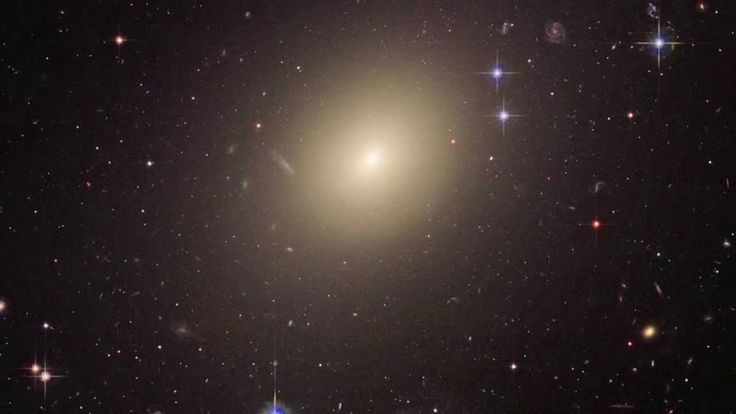The cosmos has always fascinated humanity, inspiring us to gaze into the vastness of space and unravel the mysteries of distant celestial objects. Among the countless galaxies scattered across the universe, IC 1101 stands out as a colossal giant, holding the title of the largest galaxy known to humanity. In this blog post, we embark on a journey to explore the awe-inspiring features of IC 1101, delving into its size, structure, and the enigmatic forces that govern its existence.
The Basics of IC 1101
IC 1101 is a supergiant elliptical galaxy located at the heart of the Abell 2029 galaxy cluster, approximately 1.04 billion light-years away from Earth. Discovered by the American astronomer DeLisle Stewart in 1895, IC 1101 has since captured the imagination of scientists and space enthusiasts alike. With a staggering mass that surpasses 100 trillion times that of the Sun, IC 1101 dwarfs our own Milky Way galaxy and many others in terms of size.
Size Matters – The Gigantic Proportions of IC 1101
To truly grasp the enormity of IC 1101, one must consider its size in comparison to other galaxies. The Milky Way, our cosmic abode, has an estimated diameter of around 100,000 light-years. In contrast, IC 1101 boasts a diameter exceeding 6 million light-years. This colossal scale places it among the largest celestial structures in the observable universe.
IC 1101’s immense size is a result of the merging and accretion of numerous smaller galaxies over cosmic time. Its gravitational influence extends over vast distances, shaping the dynamics of its galactic neighborhood. The intricate dance of galaxies within the Abell 2029 cluster adds to the complexity of IC 1101’s cosmic narrative.
The Heart of a Cosmic Metropolis
Situated at the center of the Abell 2029 galaxy cluster, IC 1101 is surrounded by a bustling metropolis of galaxies, each contributing to the dynamic tapestry of the cosmic web. The gravitational interactions between galaxies in such clusters play a crucial role in shaping their structures and influencing the fate of their stellar inhabitants.
IC 1101’s location in a galaxy cluster provides scientists with a unique opportunity to study the effects of cosmic collisions and interactions on a grand scale. As galaxies interact, merge, and exchange stellar material, they give rise to a variety of celestial phenomena, from starburst regions to the formation of massive black holes.
The Enigma of IC 1101’s Formation
Unraveling the mysteries of IC 1101’s formation is a challenging endeavor that requires a combination of observational data and theoretical models. Scientists believe that its colossal size is the result of a complex history involving the merging of numerous smaller galaxies over billions of years.
The collisions and interactions between galaxies lead to the redistribution of stars, gas, and dark matter, contributing to the growth of IC 1101. The process of galactic cannibalism, where larger galaxies consume smaller ones, plays a crucial role in the formation of supergiant galaxies like IC 1101.
Cosmic Powerhouses – Black Holes in IC 1101
IC 1101, like many other galaxies, harbors a supermassive black hole at its center. The gravitational influence of these cosmic behemoths extends far beyond their physical boundaries, shaping the destiny of the galaxies that host them. In the case of IC 1101, its central black hole is estimated to have a mass exceeding 40 billion times that of the Sun.
The presence of such a massive black hole raises intriguing questions about its role in the evolution of IC 1101. How did this supermassive black hole form, and how has it influenced the galaxy’s structure and dynamics? These questions drive ongoing research and observations aimed at unraveling the mysteries of IC 1101’s cosmic history.
Conclusion
IC 1101 stands as a testament to the grandeur and complexity of the universe. Its colossal size, intricate structure, and cosmic surroundings make it a captivating subject of study for astronomers and astrophysicists. As our understanding of the cosmos deepens, IC 1101 continues to inspire awe and curiosity, reminding us of the vastness and beauty of the universe that extends far beyond the confines of our home galaxy.

Leave a Reply